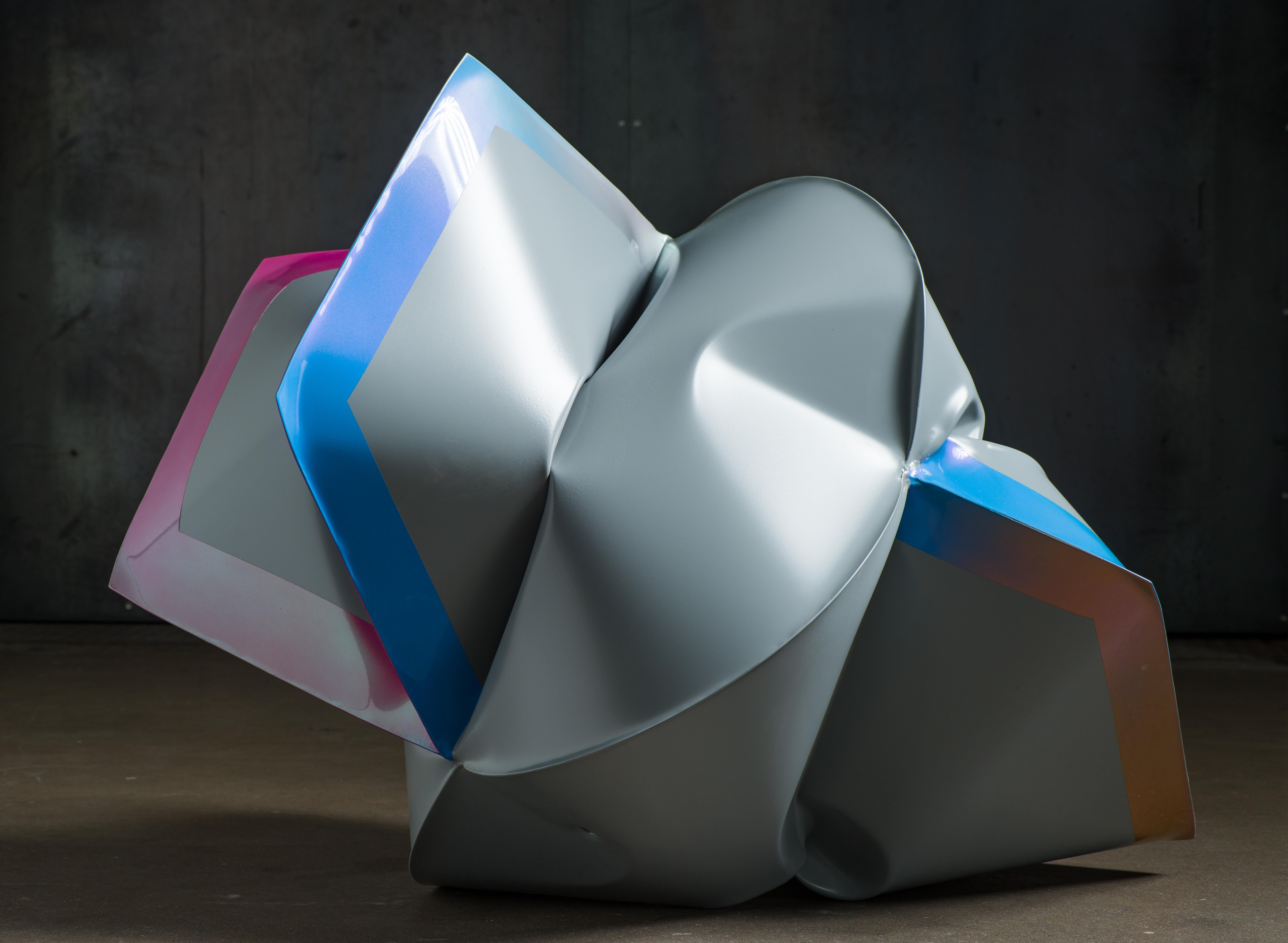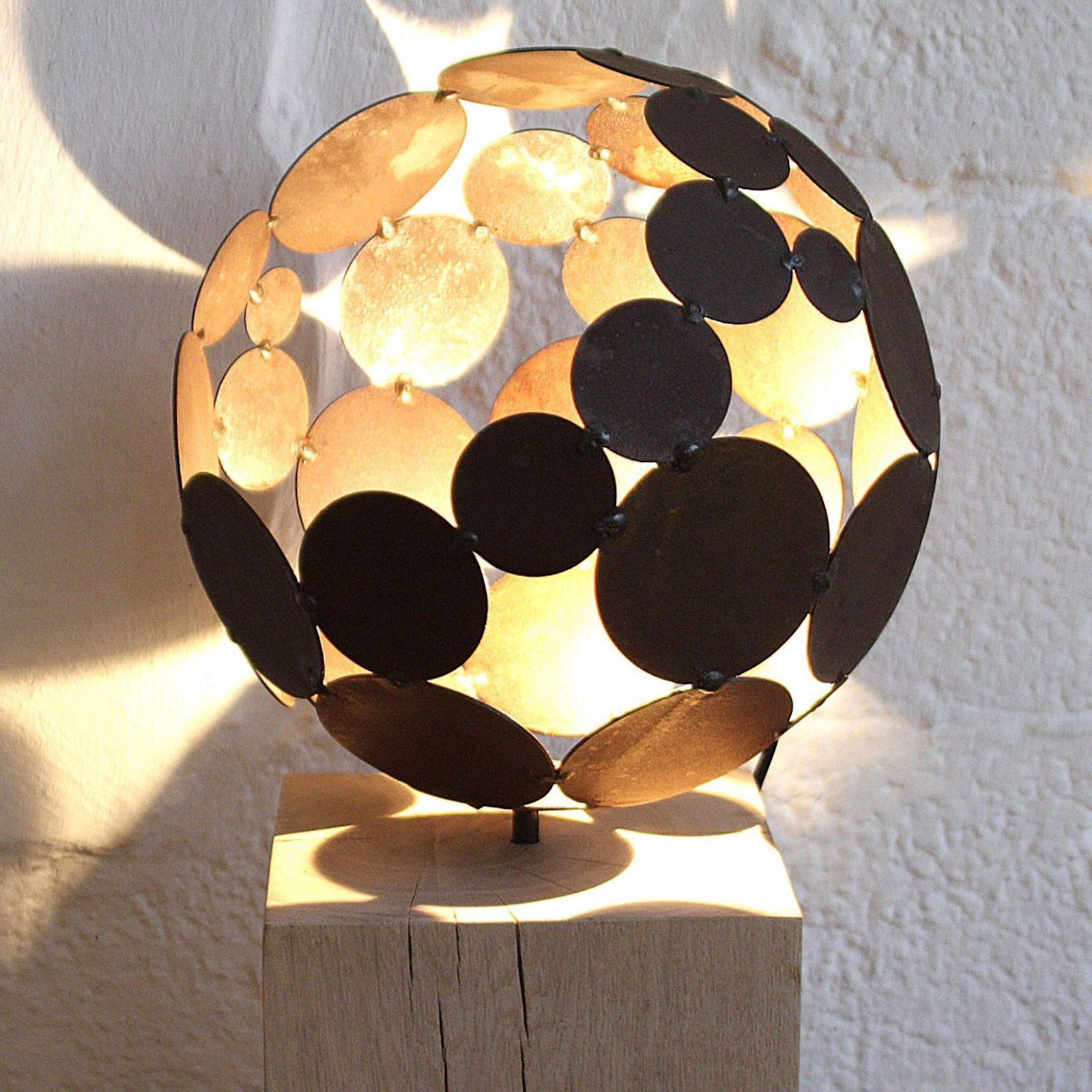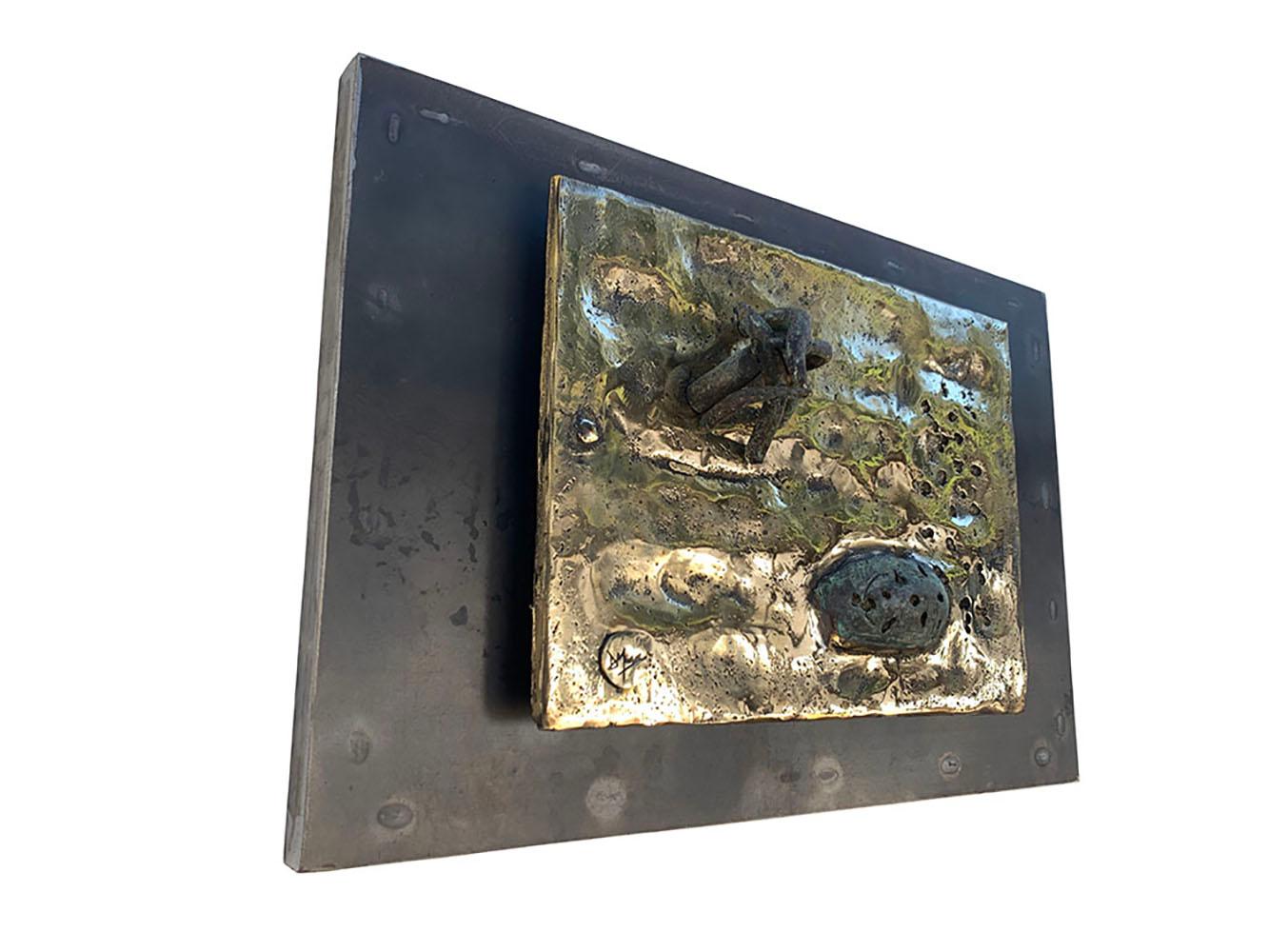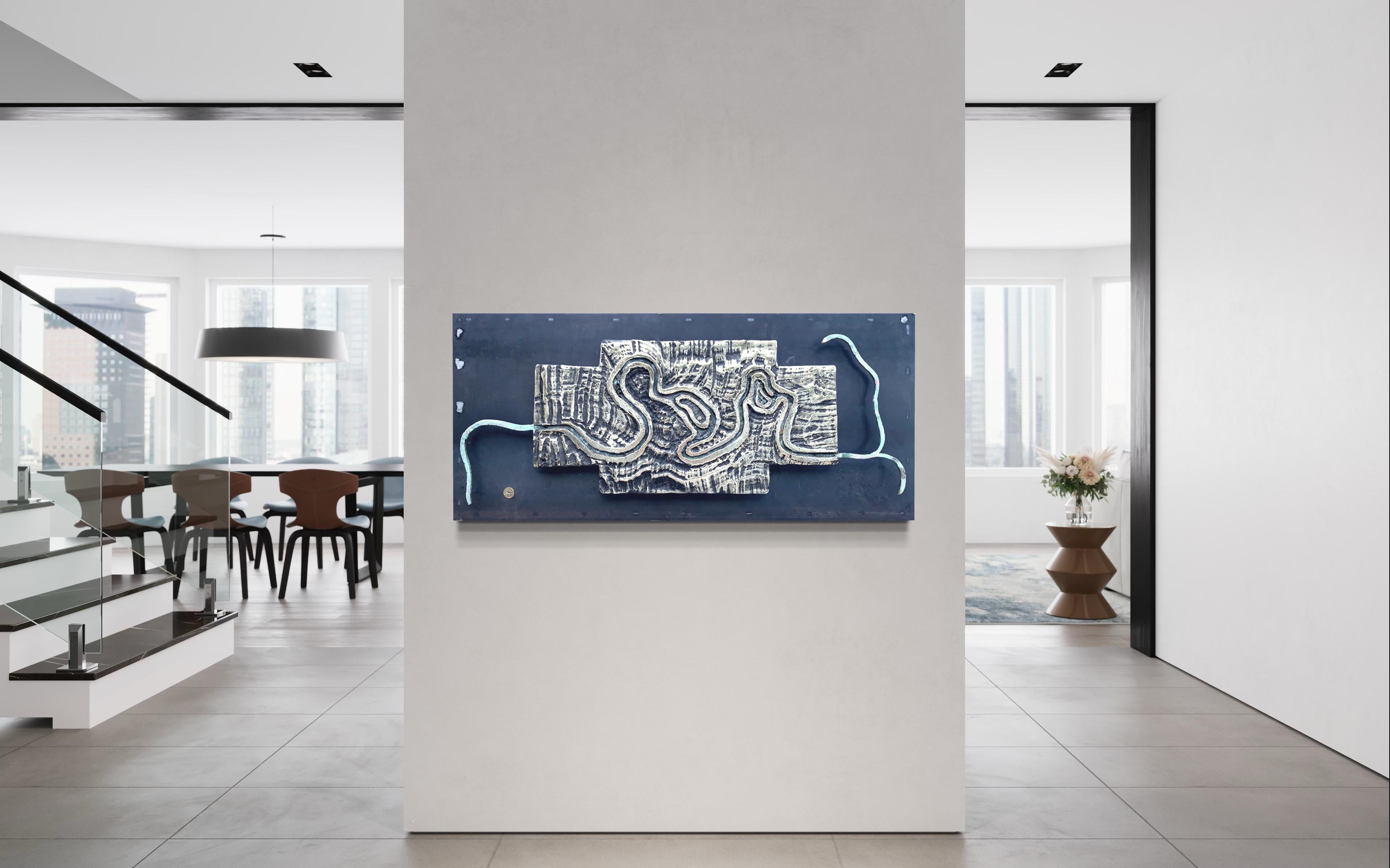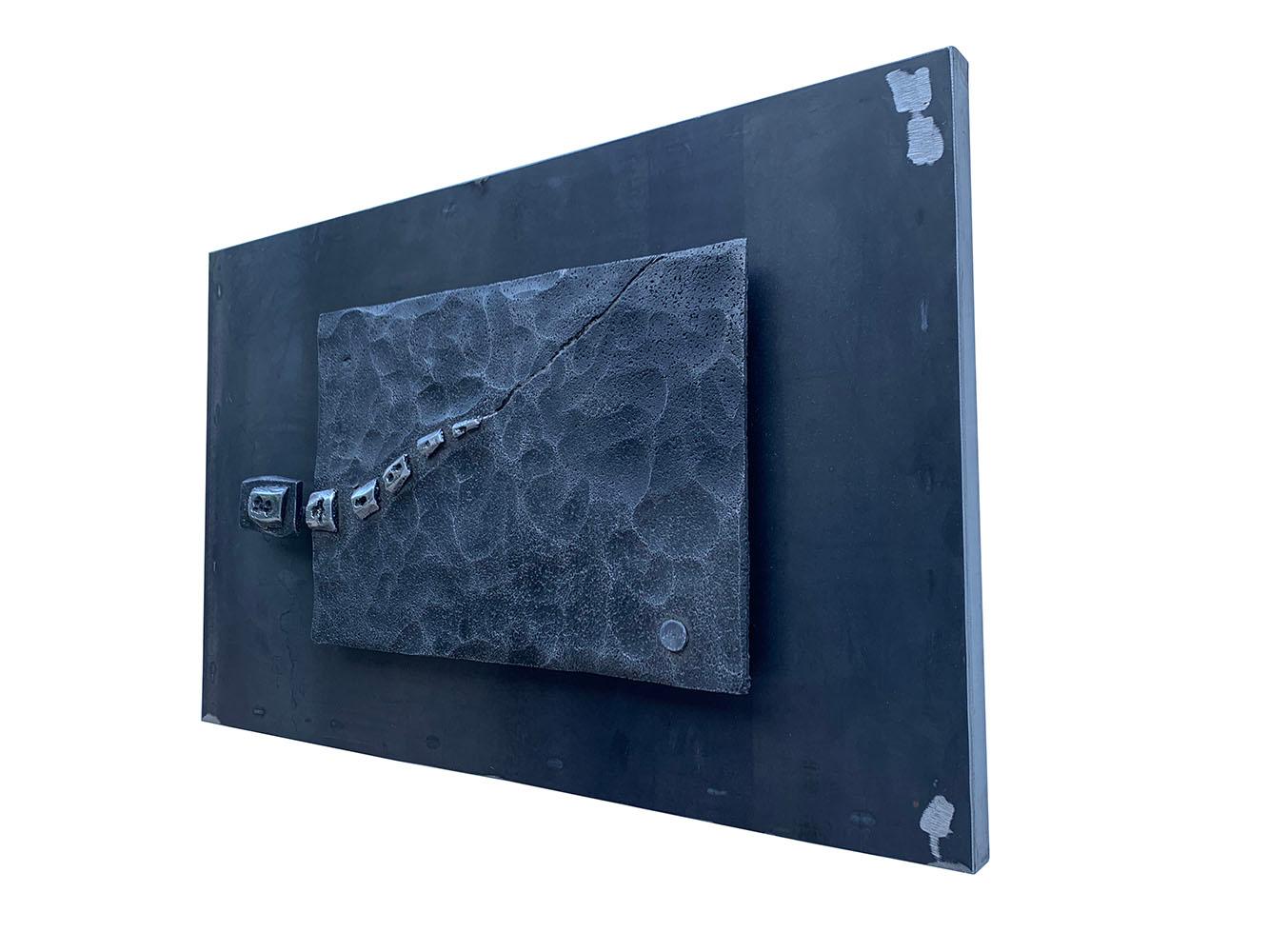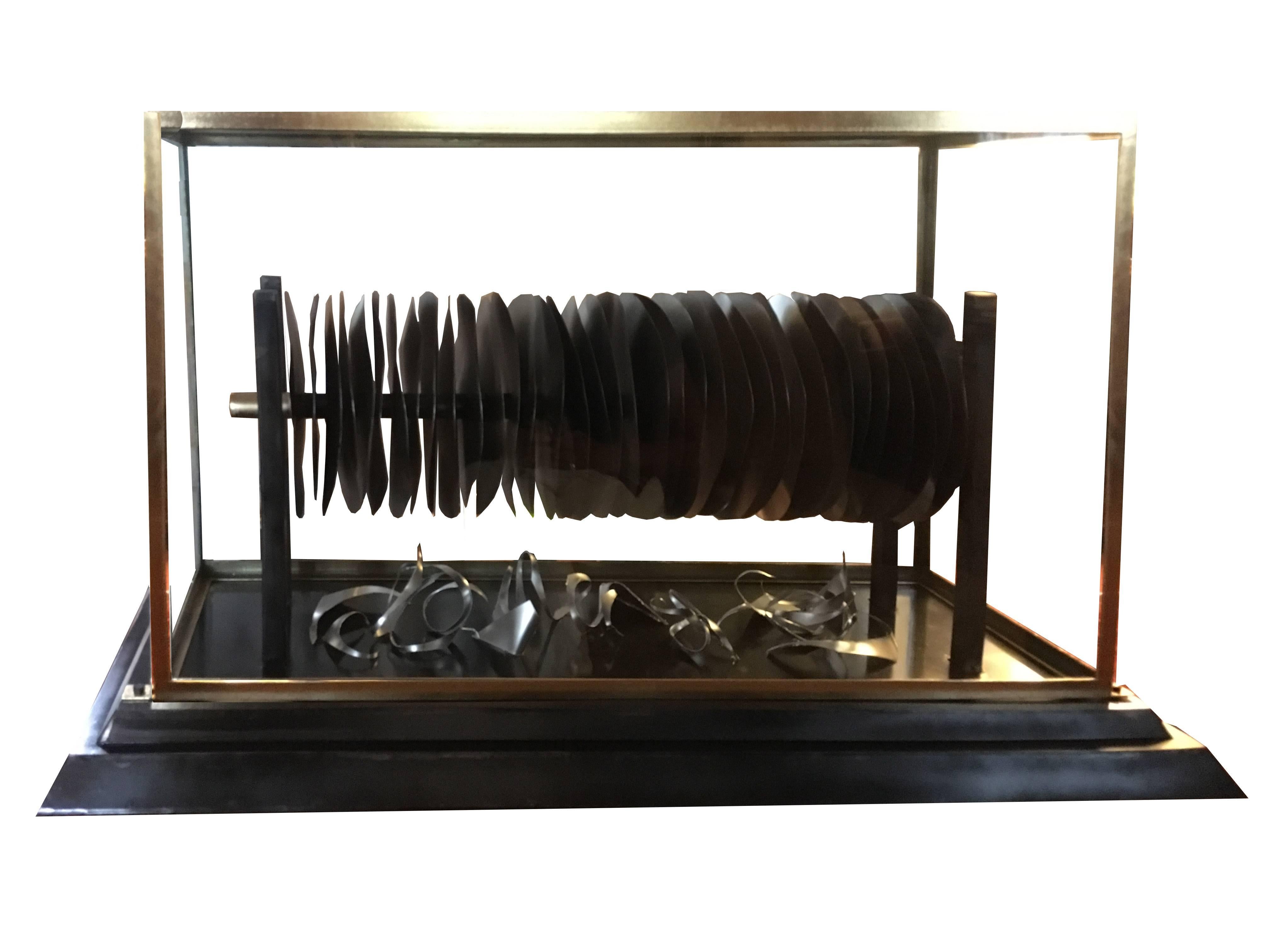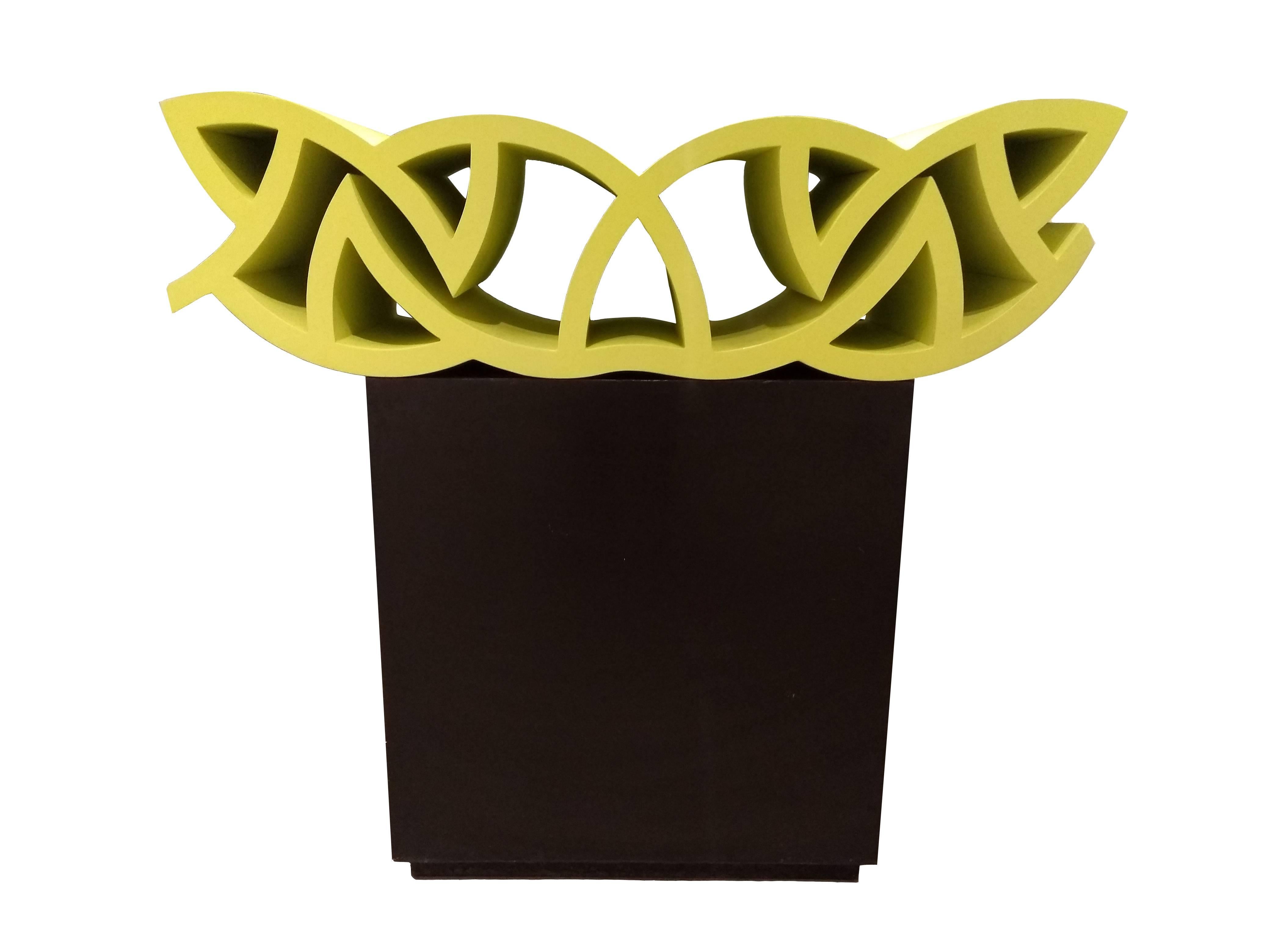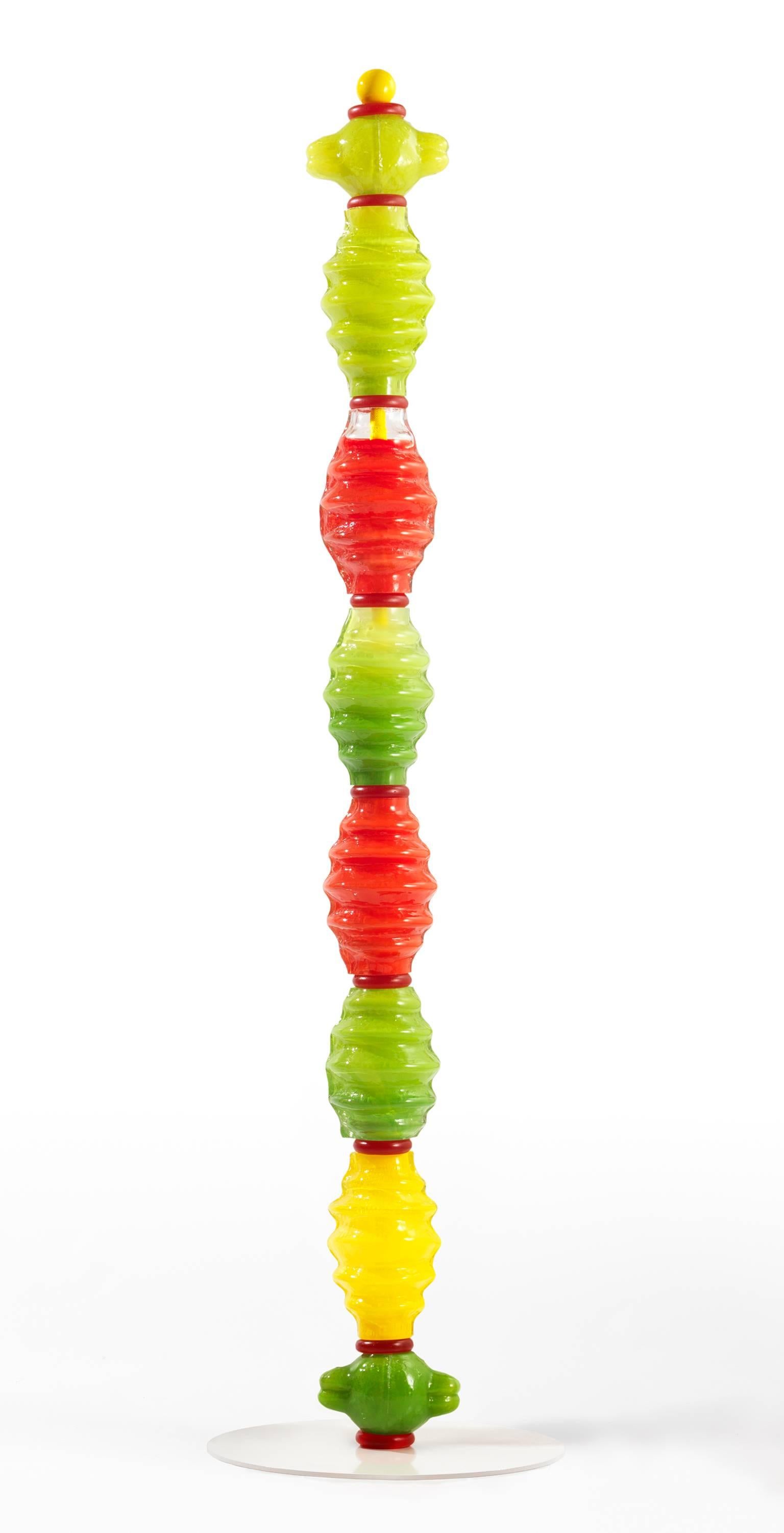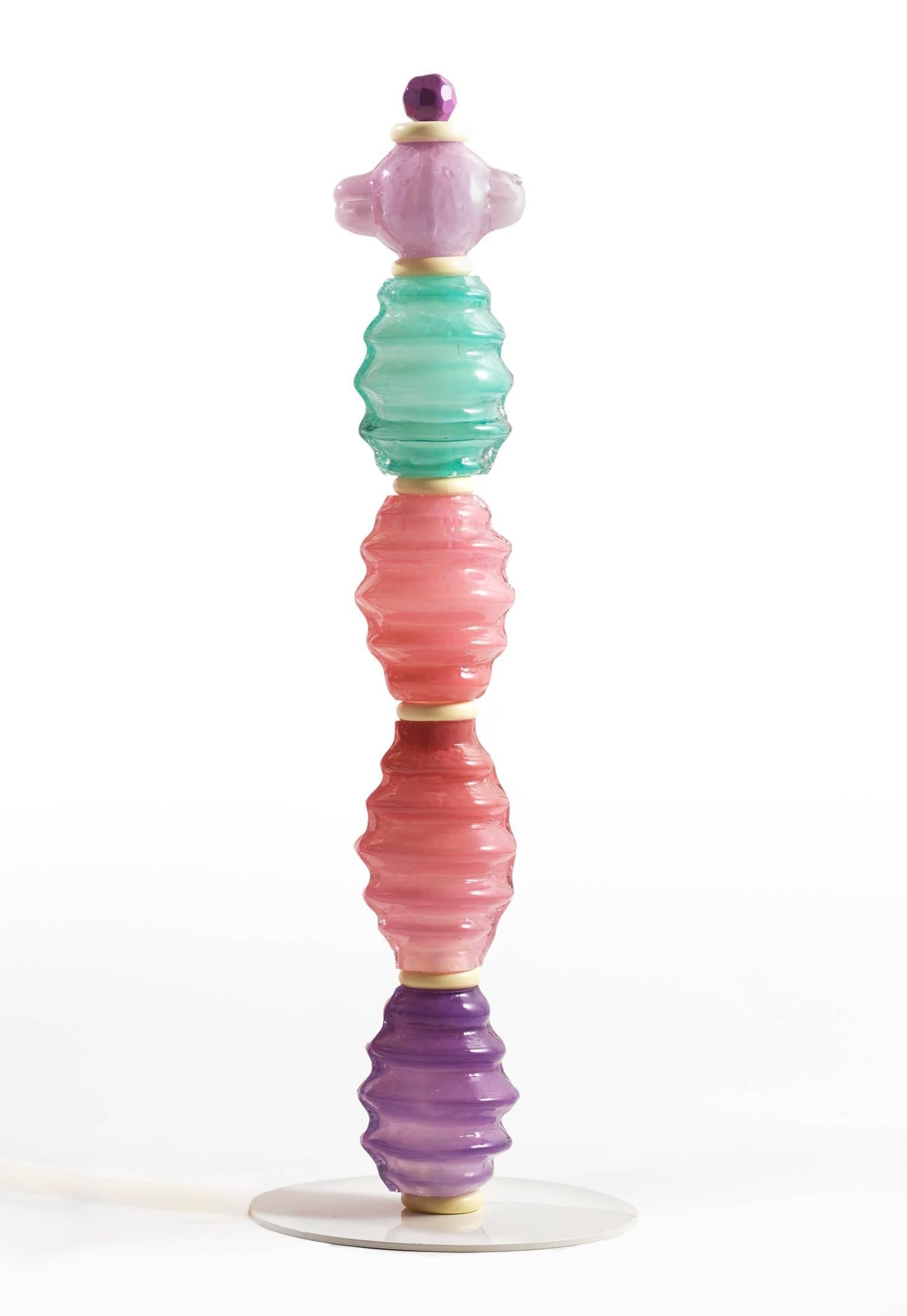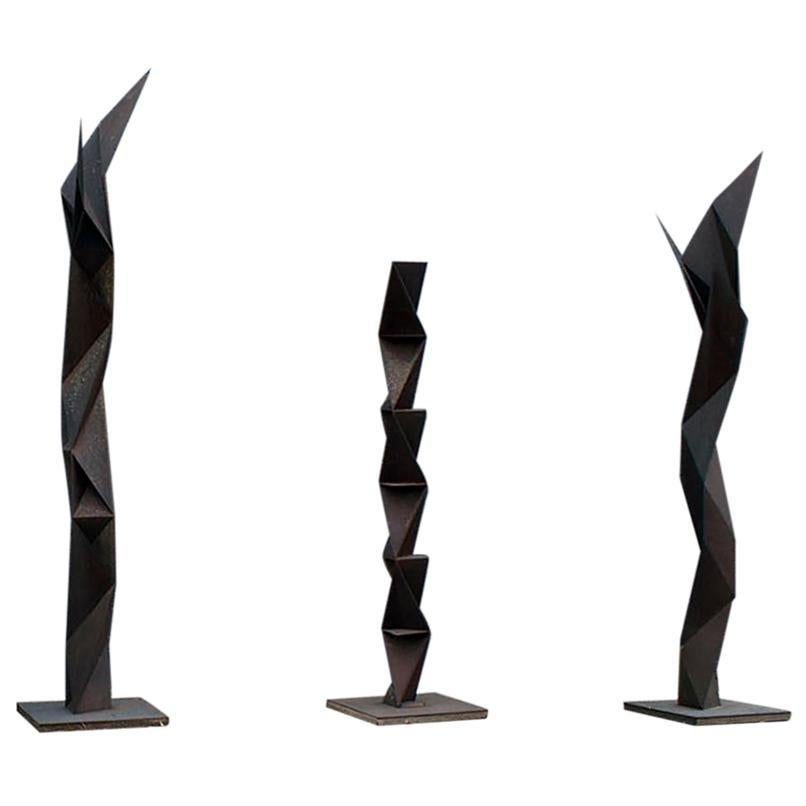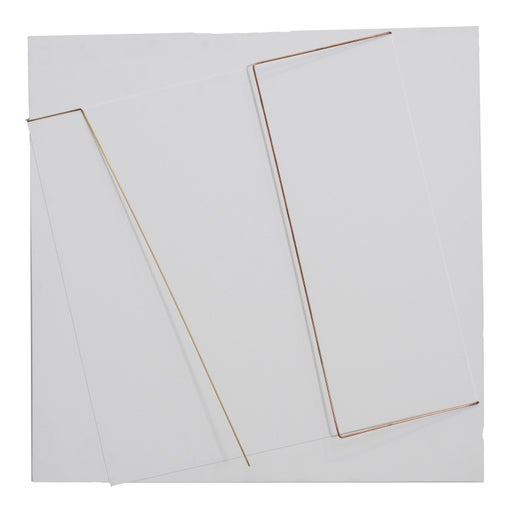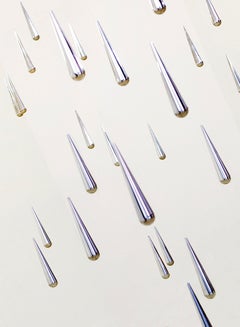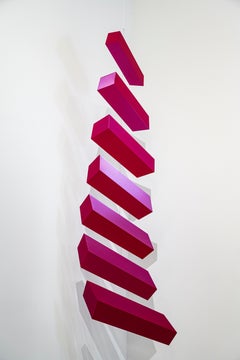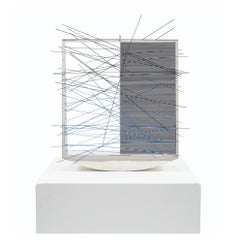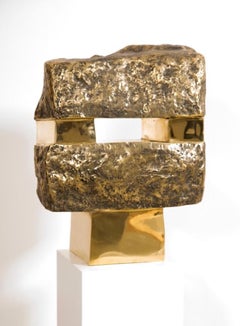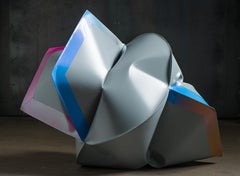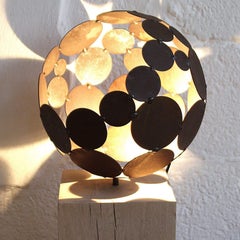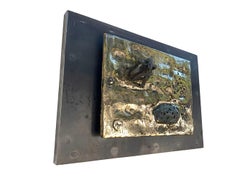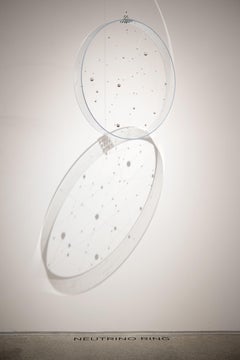
Carlos Medina, Neutrino Ring 4, Silver, Steel Wire in Polycarbonate Ring, 2021
View Similar Items
Video Loading
Want more images or videos?
Request additional images or videos from the seller
1 of 12
Carlos MedinaCarlos Medina, Neutrino Ring 4, Silver, Steel Wire in Polycarbonate Ring, 20212012
2012
About the Item
Carlos Medina
Venezuelan sculptor, graduated in Pure Art and Art History at the School of Plastic Arts of Caracas. Harvest successes from a young age: at the age of 22 he held his firstsolo exhibition at the Museum of Contemporary Art in Caracas.
At the age of 25, the Italian government gives him a scholarship to train in Carrara, Italy, staying for seven years and projecting his activity towards central Europe.
With twenty-two exhibitions in national and international Museums, recognized for his participation in symposia and biennials in America, Asia and Europe. He is currently living in Paris, and is represented by important European galleries. In the US, he has been an Ascaso Gallery artist since 2013, attending fairs and presenting four emblematic
exhibitions in Caracas and Miami.
He is the creator of twenty-six monumental public works and worthy of more than twenty national and international recognitions.
Always within the geometric abstraction, its innovative proposals on the wall or with the intervention of sculptural spaces, represent the essential and imperceptible geometrization of universe.
About the Seller
5.0
Vetted Professional Seller
Every seller passes strict standards for authenticity and reliability
Established in 1989
1stDibs seller since 2021
Typical response time: Several days
Authenticity Guarantee
In the unlikely event there’s an issue with an item’s authenticity, contact us within 1 year for a full refund. DetailsMoney-Back Guarantee
If your item is not as described, is damaged in transit, or does not arrive, contact us within 7 days for a full refund. Details24-Hour Cancellation
You have a 24-hour grace period in which to reconsider your purchase, with no questions asked.Vetted Professional Sellers
Our world-class sellers must adhere to strict standards for service and quality, maintaining the integrity of our listings.Price-Match Guarantee
If you find that a seller listed the same item for a lower price elsewhere, we’ll match it.Trusted Global Delivery
Our best-in-class carrier network provides specialized shipping options worldwide, including custom delivery.More From This Seller
View AllCarlos Medina, Rain Cylinder, 1999-2021, Spatial Intervention
By Carlos Medina
Located in Miami, FL
Carlos Medina
Rain Cylinder, 1999-2021
Spatial intervention of 60 pieces
Polished aluminum carving pieces and nylon Drops.
6.3 in. 16 cm ea.
Price: $1...
Category
2010s Kinetic Abstract Sculptures
Materials
Metal
Rafael Barrios, Movil Espiral Fractal, 2019, Aluminum, Edition 3/3
By Rafael Barrios
Located in Miami, FL
Rafael Barrios
Movil Espiral Fractal (Código M597), 2019
Edition 3/3
Hand Fabricated Lacquered Aluminum
178 x 80 cm 70 x 31.4 in.
This artwork is accompanied by a certificate of authenticity directly from the artist.
RAFAEL BARRIOS is a Venezuelan artist born in 1947 in Baton Rouge, Louisiana, US. He studied Fine Arts in Canada, the United States, and Venezuela. His artistic trajectory dates back to a very early age. He studied drawing and painting at the Museo de Bellas Artes in Caracas, Venezuela, achieving his first recognition with the award “National Youth Painting” in 1963. Upon completing his basic studies in Venezuela and Canada, he received a scholarship from J. Walter Thompson International to attend the Ontario College of Art in Toronto, Canada, graduating with honors in “Pure Art” and “Communication and Design”.
He received a scholarship from New York University (US) to attend its Graduate Program for “Fine Arts” and “Monumental Sculpture Techniques”.
He was granted several national and international awards: “The Sculpture Award”, Ernesto Avellán Exhibition; the McLean Foundation Scholarship, the highest award offered by the Ontario College of Art, Canada; the “Excelentísima Diputado Pronvicial de la Frontera” Decoration, for his Monumental Sculpture titled “Tercer Horizonte”, to commemorate 500 years of America’s Discovery, in Palos de la Frontera, Huelva, Spain; “Second Prize” at the Sofia Imber Caracas Contemporary Museum’s Biennial of Visual Arts, in Venezuela; the “Conferry Award”, First Sculpture Biennial, Francisco Narváez...
Category
2010s Kinetic Abstract Sculptures
Materials
Metal
Jesús Rafael Soto, Quadrato, 1974, Edition Denise René. Ed. 32/75
By Jesús Rafael Soto
Located in Miami, FL
Jesús Rafael Soto
Quadrato 1974
Edition Denise René. Ed. 32/75
Acrylic on aluminum with painted metal rods
45.7 x 40 x 32 cm
17.9 x 15.7 x 12.5 in.
Jesús Rafael Soto (1923 - 2005) ...
Category
1970s Kinetic Abstract Sculptures
Materials
Mixed Media
Maqueta Armonía de Volúmenes y Espacios, La Hoyada
Located in Miami, FL
Maqueta Armonía de Volúmenes y Espacios
-La Hoyada- BMPC-002, 1980(1982)
Edition /25
Bronze
48 x 37 x 26 cm
18.8 x 14.5 x 10.2 in.
ABOUT THE ARTIST
Narváez was born in Porlamar, Venezuela, in 1905; he was the fifth son of eleven siblings; his parents were Jose Lorenzo Narváez and Vicenta Rivera. Don José Lorenzo, a multifaceted and creative man, sowed the seed of creativity in his son. “My father did not fit in with his fantasies of cabinetmaker, bricklayer, master builder, and self-taught architect.”1 From an early age, Francis was led to the artistic activity, he traced, carved, made replicas of the furniture and the saints restored by his father.
In 1920 he obtained his first professional assignment, a San Rafael for the Church of Carupano, and, in 1922, his father authorized him to travel to Caracas to pursue his studies as an artist. He studied at the atelier of Marcos Castillo, at of the Angel Cabre y Magriña and at the Academy of Fine Arts in Caracas, where he was introduced to the painters and intellectuals of the time.
In 1928 he presented his first solo exhibition at the Club Venezuela. With the money raised from the sale of the works and the support of Monsignor Sosa, and the Ministers Centeno Grau and Arcaya, he studied in Paris on a scholarship. Once there, he enrolled at the Académie Julian, where Tito Salas, Cristóbal Rojas and Arturo Michelena had also studied. It was in Paris where, unable to work in wood, he turned to stone carving. “In Paris, I didn’t have wood, so I carved a lot in stone (…), when there were demolitions I purchased chunks of stone, I would take them to the workshop and carve them.”2
His first attempts at volumetric sculptures and painting in plain colours, linked to the thematic of American miscegenation and Creole reality, can be traced back to that first trip to Paris. During his stay in the French city, Arturo Uslar Pietri, Alfredo Boulton, and Finita Vallenilla supported the artist both financially and logistically, and in February of 1930, the trio of friends arranged another exhibition for him at the Club Venezuela. Narváez describes his exhibition as follows: “(…) in it I feel that the sculptural work is more my own, done with more assurance, a response to my pursuit of large planes, stylisation and synthesis.”3 By then, as Boulton himself noted in his book about the artist, Narvaez departed from most of the artistic traditions that prevailed by that time in Venezuela.
In 1931 he returned to Caracas and established his atelier at the Barrio Obrero in Catia. The atelier became the hub of the intellectual life of the time. “In those years, the atelier of Francisco Narváez was the hub of the greatest Venezuelan hope. Nothing comparable to it can be found either before or since.”4
From that year onwards, exhibitions, projects, trips, and awards we multiplied. He was awarded the President of the Republic of Venezuela Prize, the National Sculpture Prize of the 1st Official Venezuelan Art Salon, and the John Boulton Prize of the 3rd Annual Venezuelan Art Salon; for the Military Academy, he produced a spectacular relief entitled La Patria.
In 1945, commissioned by the architect Carlos Raúl Villanueva, he produced two groups of sculptures known as Las Toninas, both located in the O’Leary Square. There, as he himself states, he incorporates some baroque patterns into the figures to the source itself: “It is a work of balance between the decorative requirements and the sculpture of planes and angles.”5
In 1948 he was awarded the National Painting Prize. In the same year, he was called upon by the architect Carlos Raul Villanueva to participate in the project for the arts integration in the Universidad Central de Venezuela. Francisco Narváez’s public output continued with works such as the statue of Fermín Toro, La Educación, La Ciencia, three murals (produced by María Luisa Tovar) for the Instituto de Medicina Experimental, El Cristo; el Atleta, the equestrian statue of General Rafael Urdaneta.
In 1953 he was appointed Director of the School of Plastic and Applied Arts, and in July of the same year, he exhibited “Francisco Narváez, Maderas, Piedras y Bronces” (Francisco Narváez, Woods, Stones and Bronzes) at the Museum of Fine Arts.
Narváez is, unquestionably, one of the great Venezuelan sculptors, his work goes through various stages and interests; as the art world evolves, the artist does not remain in his initial scopes of work. His creations are not imposed by the prevailing trends or fashion but do evolve by experimenting with new materials and interests.
When one peruses the artist’s lengthy list of exhibitions, commissions, and awards, it is worth remembering the Narvaez who embark on his career as a child and who, overcoming obstacles, knew how to make the most of his curiosity. He did not settle for living off his successes. He did not remain stagnant as many creators of his environment did. Narvaez managed to understand the changes in the history of art around him. We must not overlook the fact that Francisco Narvaez is an artist amid all the changes occurring in the art world. He moves from the classics to the great transformations in the art world. It is the Europe of Picasso, Braque, Arp. He observes, he is aware of what is happening in the centres of the world of art, but between his craft and his sensitivity, the result is NARVAEZ, his stamp, and his identity.
Francisco Narváez comes from tradition, and his first stage is linked to the classics, to the exploration of his heritage, but always with his very own language. Throughout his prolific career, he knew how to remain true to himself, without disregarding the influences of his surroundings or his artistic interests: his ability as a sculptor, his selection of materials, whether they were wood, stone or bronze; his choice of the subject of his work…His mastery and great craftsmanship are a constant that over time have made him a leading player in the history of contemporary Venezuelan and world art.
From his beginnings, no subject was foreign to him. His paintings, drawings, aquarelles, and sketches are testimony to his prolific output. Among his themes are portraits, our traditions, still lifes, and landscapes. Narváez is an artist who represents his time. Later, he evolved towards purer and simpler forms, abandoning figurative art for short periods.
In 1956 he declared to the newspaper El Nacional: “Every day I am freeing myself, it is a soul that frees itself from the ephemeral wrappings of the circumstantial always, as well as from the inevitable weight of the anecdote. This second stage of my work is remarkably close to abstractionism, even if there are still certain figures or figurations in the sculptures that I will shortly be showing. However, pure, and absolute abstractionism, it will treat the form itself as the sole reason for its existence on the plane of artistic excellence.”6
The artistic development was his professional life. Each period of his life as an artist, he went one step further, searching, solving, seeing plenty of things and understanding how diverse expressions were transforming themselves. His hands followed his gaze and his mind, always inquisitive. He added movement to the volumes.
Arturo Uslar Pietri, “Formas Nuevas”, Cromotip editions, 1956 “Francisco Narváez is a path: the path that Venezuelan sculpture...
Category
1980s Abstract Abstract Sculptures
Materials
Bronze
05 enero 2013 41 Black, 2013
By David Rodriguez Caballero
Located in Miami, FL
05.enero.2013
41 Black, 2013
Unique Piece
Aluminum, Enamel
105 x 85 x 25 cm
41.3 x 33.4 x 9.8 in.
About The Artist
Born in 1970 in Pamplona, Spain. Madrid and New York-based artist...
Category
21st Century and Contemporary Abstract Geometric Abstract Sculptures
Materials
Enamel
Price Upon Request
27 mayo 2011 48 -Purple
By David Rodriguez Caballero
Located in Miami, FL
27 mayo 2011
48 Purple, 2011
Unique Piece
Aluminium, Enamel
100 x 91 x 31 cm
39.3 x 35.8 x 12.2 in.
About The Artist
Born in 1970 in Pamplona, Spain. Madrid and New York-based art...
Category
21st Century and Contemporary Abstract Geometric Abstract Sculptures
Materials
Enamel
Price Upon Request
You May Also Like
Matti Havens & Gregory Kramer, Lovelace's Tribute, 2018, Sound Installation
By Matti Havens & Gregory Kramer
Located in Darien, CT
Lovelace’s Tribute
2018
sung by Christina Tsers
This installation is in honor of Ada Lovelace, generally recognized as the first computer programmer. Lovelace was the daughter of ...
Category
2010s New Media Abstract Sculptures
Materials
Wire
Clumsy Sky Grey
By Jeremy Thomas
Located in Phoenix, AZ
cold rolled steel, powder coat, and urethane
Category
2010s Abstract Abstract Sculptures
Materials
Steel
Ball lamp rust with oak base natural
By Stefan Traloc
Located in Winterswijk, NL
Ball lamp d=28cm rust with oak base natural 20x20x48cm
You will find here an exceptional as well as high quality lamp,
which conjures up a beautiful shadow pattern on the wall or ce...
Category
21st Century and Contemporary Art Deco Abstract Sculptures
Materials
Steel
$459 Sale Price
20% Off
Mural Modern Wall Hanging Brass and Steel "Shades of Gold" Brutalist Outdoor
By David Marshall
Located in Benahavis, ES
The modern Wall Sculpture " Shades of Gold ” is a unique metal Mural made from a burnout mold by David Marshall in 2021, sand cast in brass and steel in our foundry, handcrafted by ...
Category
2010s Abstract Abstract Sculptures
Materials
Metal, Brass, Steel
Abstract Wall Sculpture Brass and Steel Modern Metal Mural "Pantanal" Black Gold
By David Marshall
Located in Benahavis, ES
The Mural " Pantanal " was created by DM, from sand cast brass and steel
a unique piece made from a burnout mold by the Artist.
This piece is handmade, mounted and finished in our f...
Category
2010s Contemporary Abstract Sculptures
Materials
Metal, Brass, Steel
Abstract Metal Mural Modern Wall Hanging Sculpture Aluminium Steel " Blow Out "
By David Marshall
Located in Benahavis, ES
The modern Wall Sculpture " Blow Out ” is a unique metal Mural made from a burnout mold by David Marshall in 2021, sand cast in aluminium and steel in our foundry, handcrafted by th...
Category
2010s Contemporary Abstract Sculptures
Materials
Metal, Steel
